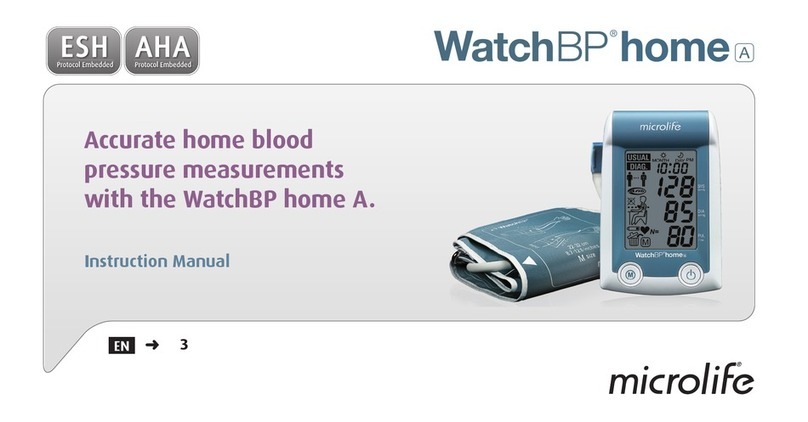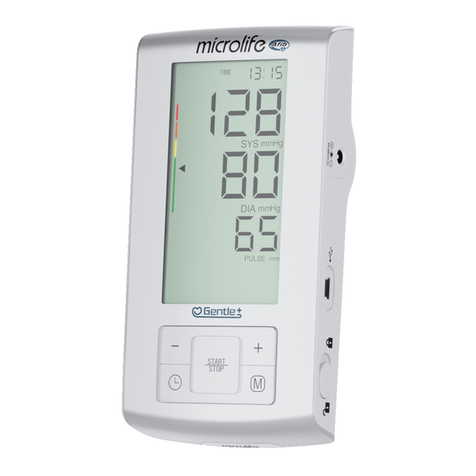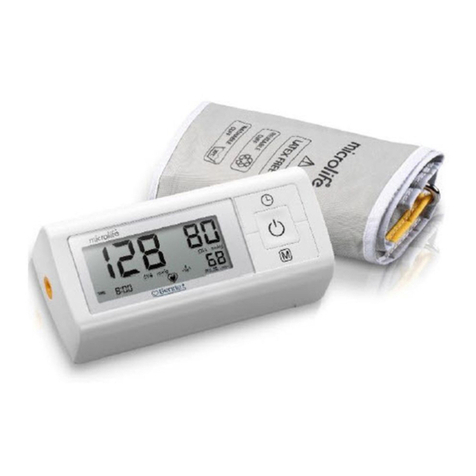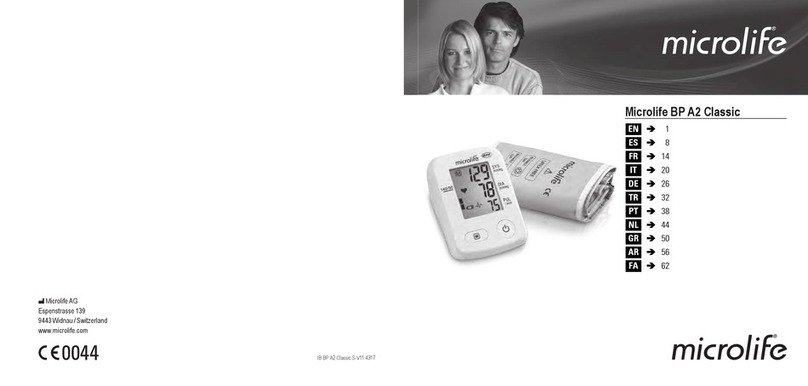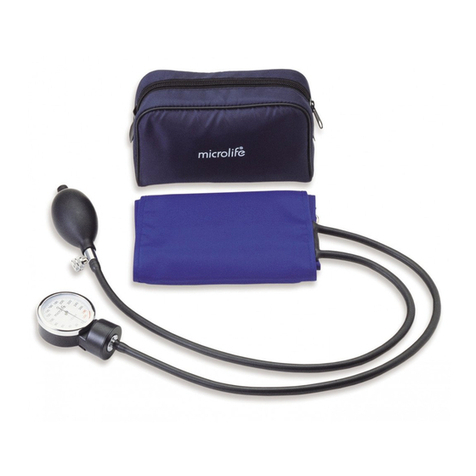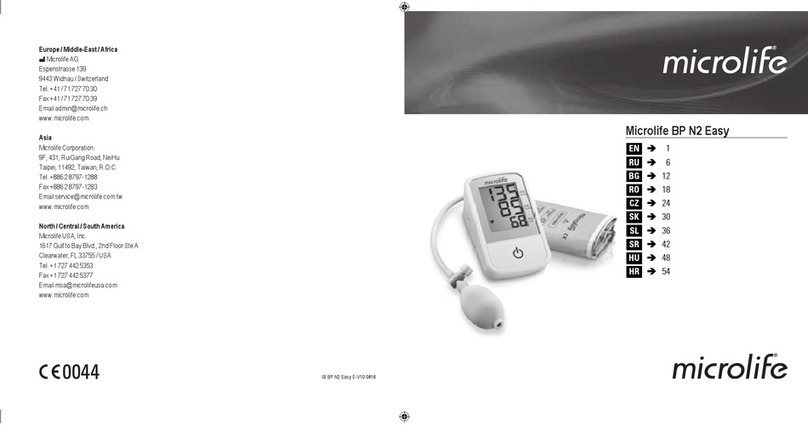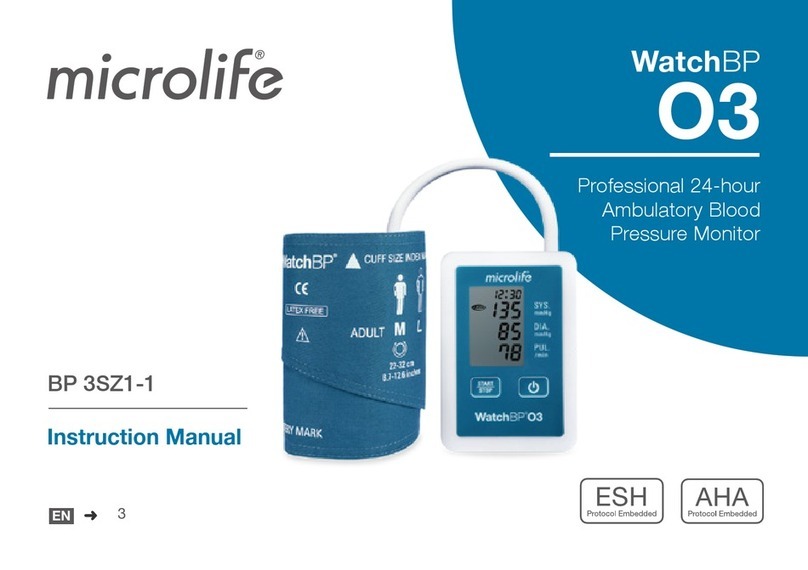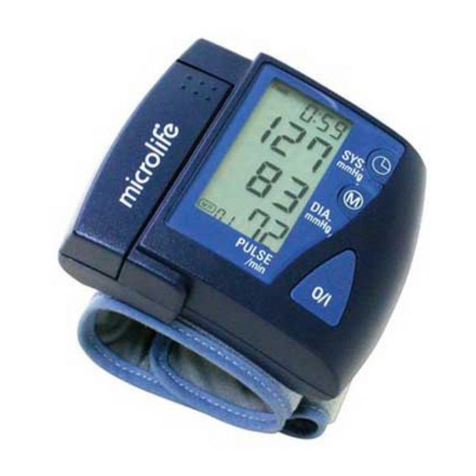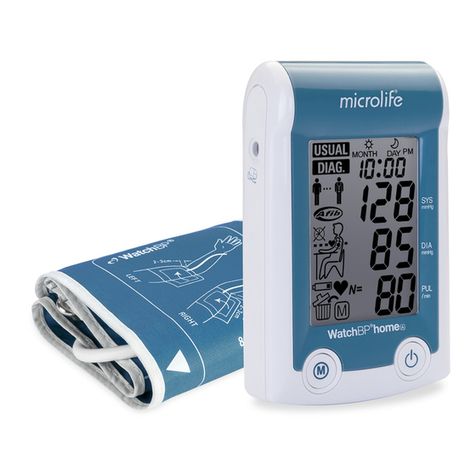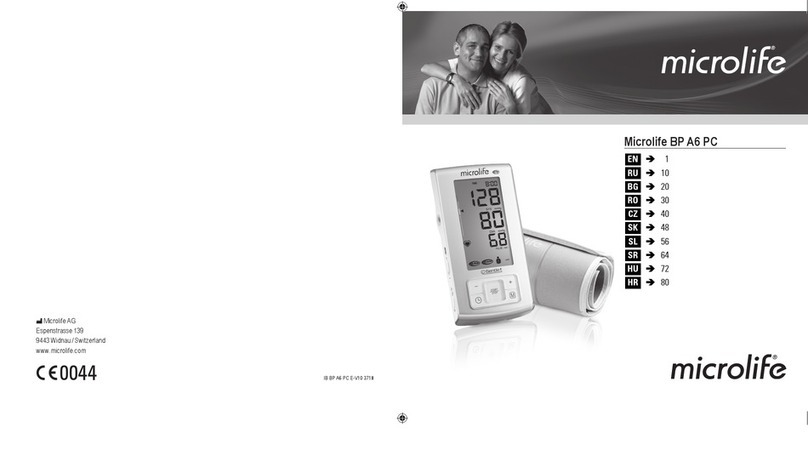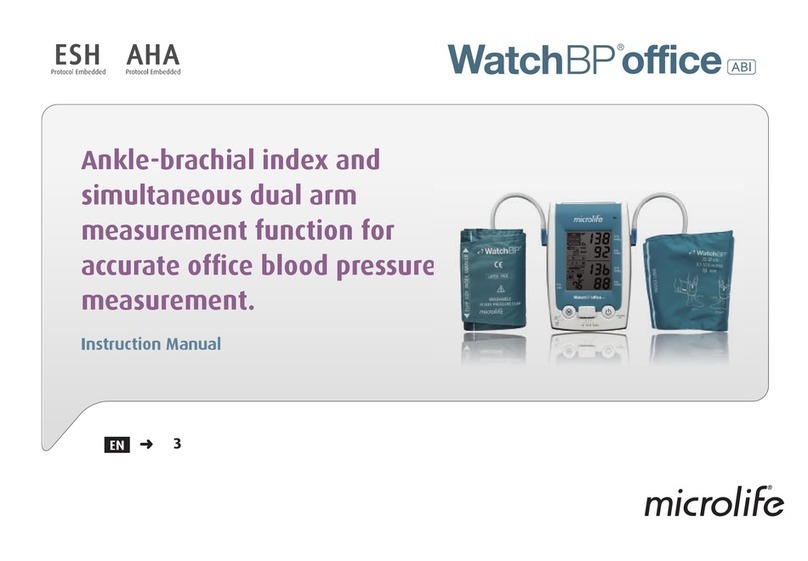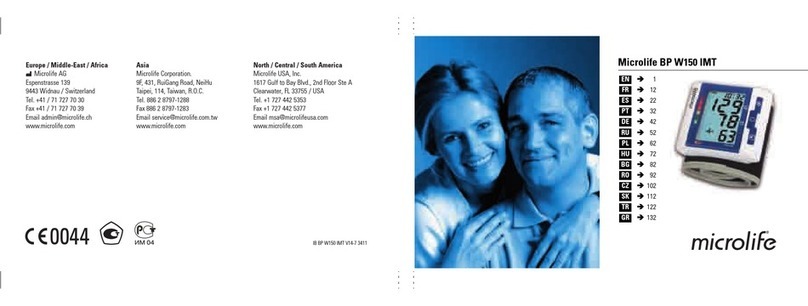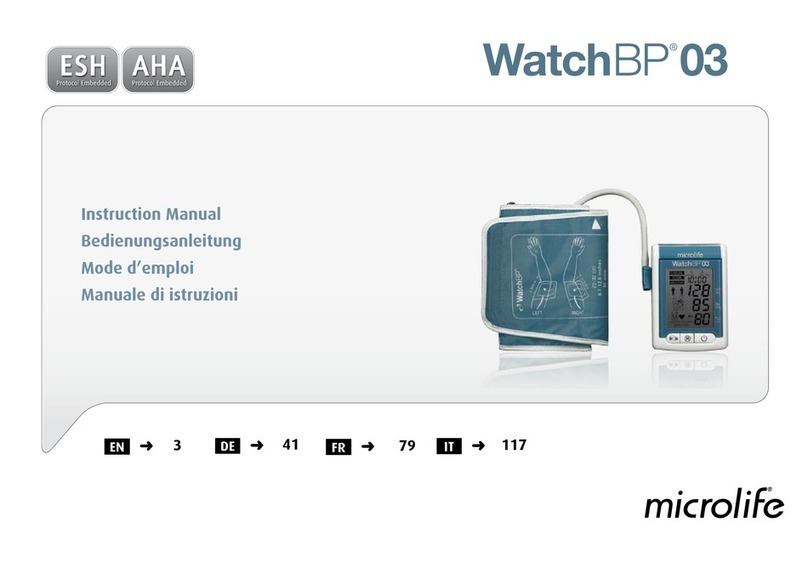100 - 130 60 - 80 Self-check
2blood pressure
elevated 130 - 135 80 - 85 Self-check
3blood pressure too
high 135 - 160 85 - 100 Seek medical
advice
4blood pressure
160
100
Urgently seek
medical advice!
The higher value is the one that determines the evaluation.
Example: a blood pressure value of
140/80 mmHg or a value of
130/90 mmHg indicates «blood pressure too high»
2. Important Facts about Atrial Fibrillation (AFIB)
What is Atrial Fibrillation (AFIB)?
Normally, your heart contracts and relaxes to a regular beat.
Certain cells in your heart produce
electrical signals that cause the
heart to contract and pump blood. Atrial fibrillation occurs when
rapid, disorganized electrical signals are present in the heart’s two
upper chambers, called the atria;
causing them to contract irregularly (this is called fibrillation). Atrial fibrillation is the most common
form of heart arrhythmia or irregular heart beat. It often causes no
symptoms, yet it significantly
increases your risk of stroke. You’ll
need a doctor to help you control the problem.
How does AFIB impact my family or me?
People with AFIB have a five-fold higher risk of getting stroke.
Since the chance of having a stroke
increases with age, individuals
above the age of 55 years benefit most from screening for AFIB.
However, for younger individuals with risk factors such as diabetes
or hypertension screening for
AFIB is also recommended. Early
diagnosis of AFIB followed by adequate treatment can
significantly
reduce the risk of getting stroke.
Younger individuals with AFIB have a relatively low risk of getting
stroke as compared to elder
people.
For more information please visit our website: www.microlife.com.
Microlife AFIB detection provides a convenient way to screen
for AFIB (only in AFIB/MAM
mode)
Knowing your blood pressure and knowing whether you or your
family members have AFIB can
help reduce the risk of stroke.
Microlife AFIB detection provides a convenient way to screen for
AFIB whilst taking your blood pressure.
Risk factors you can control
High blood pressure and AFIB are both considered «controllable»
risk factors for strokes. Knowing your
blood pressure and knowing
whether you have AFIB is the first step in proactive stroke prevention.





